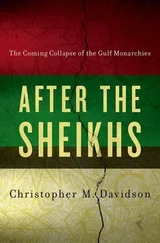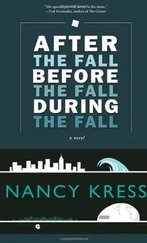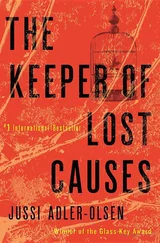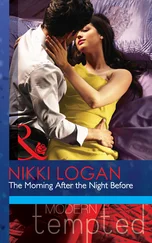Then, in 1963, a southern California surf-rock group, the Beach Boys, acquired a national reputation, and, beginning in 1964, the Los Angeles area — with Sonny and Cher, the Byrds, the Mamas and the Papas, the Lovin’ Spoonful, and such indigenous and locally popular groups as Love, the Seeds, Iron Butterfly, and Buffalo Springfield — became a center for all kinds of rock. Phil Spector, the record producer, set up offices on the Strip; a huge teen dance hall called the Hullabaloo opened down the boulevard; and a number of night clubs on the Strip went rock. This drew — in addition to the teen-age clientele — some established, serious longhairs from the two-car bohemia in the canyons above the boulevard, more serious longhairs from the less affluent bohemias of Venice and Long Beach, and some motorcycle groups. The motorcycle groups were soon dispersed; a hint from a Sunset Plaza merchants’ association caused red no-parking lines to be painted all along the curb where the motorcyclists were accustomed to park, and a hot-dog stand called the Plush Pup put up a sign announcing that complaints from neighbors had made it impossible for the place to welcome guests on motorcycles. The serious longhairs were soon made uncomfortable, too; some of their favorite haunts, like the Trip and the Action, were closed for various reasons, and the Strip itself became a very difficult place for the marijuana, drug, or LSD users among them to make a connection.
The serious longhairs returned — temporarily, at least — to their beaches and canyons; the teen-agers, however, remained awhile. The notorious sprawl of Los Angeles — where, for example, it may take a maid two and a half hours to make her way by bus from Watts to Beverly Hills — leaves the city at night diffused and lifeless. The Strip became a kind of Main Street where the young (who drove or hitched a ride from the surrounding area) could spend their time. They soon came in such numbers that they brought traffic nearly to a halt. Restaurant proprietors on the Strip, who saw their business dwindling even further, took steps. All last summer, invoking an old city-and-county curfew law that prohibits people under eighteen from lingering on the street after 10 P.M., the sheriff’s men were stopping people with long hair or wearing unusual clothes to demand identification (draft cards, driver’s licenses), as proof of age. In addition, a number of ad-hoc ordinances were put into effect. Twenty-one is the legal drinking age in California, but people eighteen and over had for years been welcome to dance at rock establishments with liquor licenses, where the minors got Cokes, while drinks were served to their elders; under a new ordinance, no one under twenty-one was permitted to dance in a place where liquor was served.
The Whisky a Go Go, once an important center for West Coast rock and one of the few places on the Strip to survive this legal maneuver, tried several solutions, in series. First, it continued serving liquor and put minors on benches in the balcony, but the young customers, who wanted to dance, went elsewhere. Then it stopped serving liquor and raised its admission price from two dollars to three; the minors came back, but the attractive liquor profits were lost. A few weeks ago, the Whisky enlarged its stage to occupy the entire dance floor, which means that there is no room to dance while a live performance is on. It also raised the price of admission to three-fifty, started serving liquor again, and required guests between eighteen and twenty-one to have their hands marked with an ultraviolet stamp, so that they would be easily identifiable as below drinking and dancing age. At the same time, the Whisky’s entertainment went Motown —a change that the teen-agers, for complicated reasons of their own, associate with the return of the Mafia and Las Vegas interests to the Strip. (Young longhairs are almost unanimous in their conviction that they were cleared off the Strip to make room for more serious, less conspicuous forms of vice than lingering after curfew.) In any case, the Whisky’s action could only make teen-agers feel less welcome there. Throughout the spring and summer, licenses permitting minors to be served anything at all were revoked at one place after another; several of these places reluctantly went adult and topless — a change that seemed to cause the authorities no distress. Gradually, the campaign worked. Few but the hardiest or most lost teen-agers cared to risk the “hassle” that awaited them on the Strip.
Then, just before Halloween, two high-school students mimeographed a hundred leaflets announcing a “demonstration” for the evening of November 12, 1966, in front of Pandora’s Box, to protest “Police Mistreatment of Youth,” and Al Mitchell, a former seaman in the merchant marine who runs the Fifth Estate, gave them the money to print a few thousand more. Mitchell, a moderate-looking man in his middle forties, had shot a film about the striking grape pickers of California, and he was preparing Blue Fascism , a documentary about the Los Angeles Police Department, at the time the leaflets were put out. On November 12, a crowd of thousands — high-school students, dropouts, New Left university students, parolees from a nearby reform school, serious longhairs, squares, runaways, sympathizers, passersby, and the merely curious — gathered in front of Pandora’s Box, and Mitchell got more footage than he had anticipated. The crowd, through its sheer size, stopped traffic for a considerable period, and a few of its members caused a total of a hundred and fifty-eight dollars’ worth of damage to a bus and a liquor store. (In a demonstration some weeks before, several UCLA football fans — disappointed that USC rather than their own team had been invited to the Rose Bowl — stopped every single car on the San Diego Freeway, ostensibly to see whether there were any USC students inside; the UCLA fans probably caused more damage, and certainly caused less outrage, than the crowd outside Pandora’s Box.)
The Los Angeles police began to attack the crowd with billy clubs from the eastern side, driving them westward along the Strip. The sheriff’s men, standing across the county line, saw what they thought was a hostile crowd of longhairs advancing on them and took action. Several people were hurt, others arrested. Later that night, when a group of teen-agers were gathered in Pandora’s Box listening to a shy and talented group called the World War III, the police surrounded the building and ordered the management to close in seven minutes. A police bus pulled up and policemen pounded on the walls of Pandora’s Box and ordered the occupants out — to arrest them for loitering after 10 P.M. William Tilden, a soft-spoken man in his thirties, who has managed Pandora’s Box for seven years, let the teen-agers telephone their homes for permission to stay overnight. They finally left when the police were called off, about three in the morning. In the following weeks, Tilden was arrested on a felony charge — alleged assault on two police officers — for which he has yet to stand trial, Pandora’s Box was closed and condemned, and a highway project that was to have demolished the place in 1969 was accelerated.
Since a teen-age establishment under suspension of license may legally open on holidays, Tilden opened his place on New Year’s Eve. There was not room enough inside to dance, but the World War III played for several hours to a colorful, quiet audience. Tilden himself stood rather sadly outside, replying to a question posed by several young longhairs — whether he might open the place one day as a private club. He did not know; it depended on the outcome of his trial. There was an elegiac air to the occasion, and something incongruous: like a scene from A Midsummer Night’s Dream taking place in a bomb shelter. On other evenings, there had been some demonstrations with which Al Mitchell was not involved, and two (on November 26th and on December 10th) with which he was. (He had asked Tilden to join him, but Tilden declined.) By this time, however, Mitchell had founded RAMCOM (the Rights of Assembly and Movement Committee), and he had been joined by an organization called CAFF (Community Action for Facts and Freedom), which included, among others, Lance Reventlow and the managers of the Beach Boys and the Byrds; by various unaffiliated parents, clergymen, and concerned adults in the community at large; and, indirectly, by the Provos, an anonymous anarchical group (whose original branch was formed in Holland), who complicated matters delightfully by singing Christmas carols on the Strip before Christmas, and on several occasions after. In mid-December, RAMCOM and CAFF negotiated a truce with the police — a truce that despite RAMCOM posters reading “Police Capitulate,” has so far consisted only of a ban on demonstrations from the teen-age side.
Читать дальше






![Джеффри Арчер - The Short, the Long and the Tall [С иллюстрациями]](/books/388600/dzheffri-archer-the-short-the-long-and-the-tall-s-thumb.webp)





